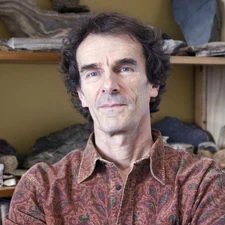Jacques Malavieille

The 2012 Stephan Mueller Medal is awarded to Jacques Malavieille in recognition of his fundamental contributions to the integration of field-based studies with analog modeling to study lithospheric deformation.
Jacques Malavieille was initially trained as a structural geologist as student of Prof. Maurice Mattauer and developed a thorough understanding of the inextricable link between crustal and lithospheric deformation processes. In the early Eighties, his work on the “a-type folds” in Corsica and the western Alps, linking lineations and mountain building, were forerunners of the analyses and recognition of similar structures elsewhere, promoting the extensive use of small scale structures to unravel the large scale kinematic of the mountain ranges. In the same years, analytic studies of small scale structures as strain fringes and asymmetric boundins yielded new insights of the kinematics of structures whose development was investigated in natural occurrences as well as through specially-designed computer and analog modeling. Some of his early work performed in the French Variscan domains and the Basin and Range was one of the first to realize that tens of km of extension could be accommodated by normal faults producing the since then famous “metamorphic core complexes”. Malavieille was a global pioneer of analog modeling applied to the development of fold-and-thrust belts and accretionary wedges. He went on to establish one of the internationally renowned centres for analog modeling in Montpellier, where numerous scientists have performed insightful experiments. The work done under his guidance has improved among others the understanding of accretionary wedges, seamount collision, basal underplating, tectonic erosion, oblique accretion. Malavieille continues to spend over one month per year in the field, studying the mountain belts of Taiwan, western Tibet and elsewhere. Throughout his career he has also dedicated time and effort to help fellow researchers by performing administrative functions; serving as head of his research lab for four years and serving many years as president of the CNRS national committee for earth sciences.
